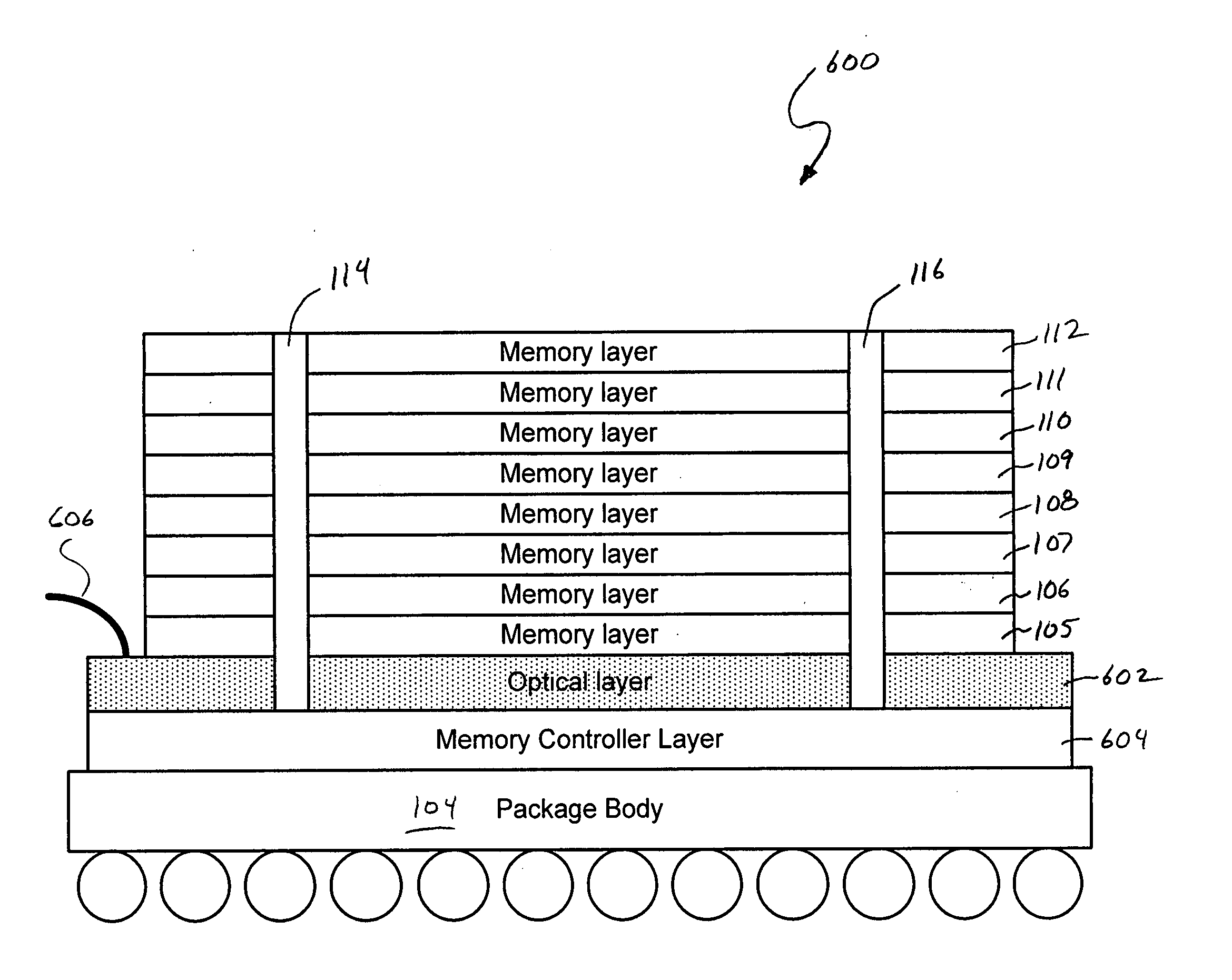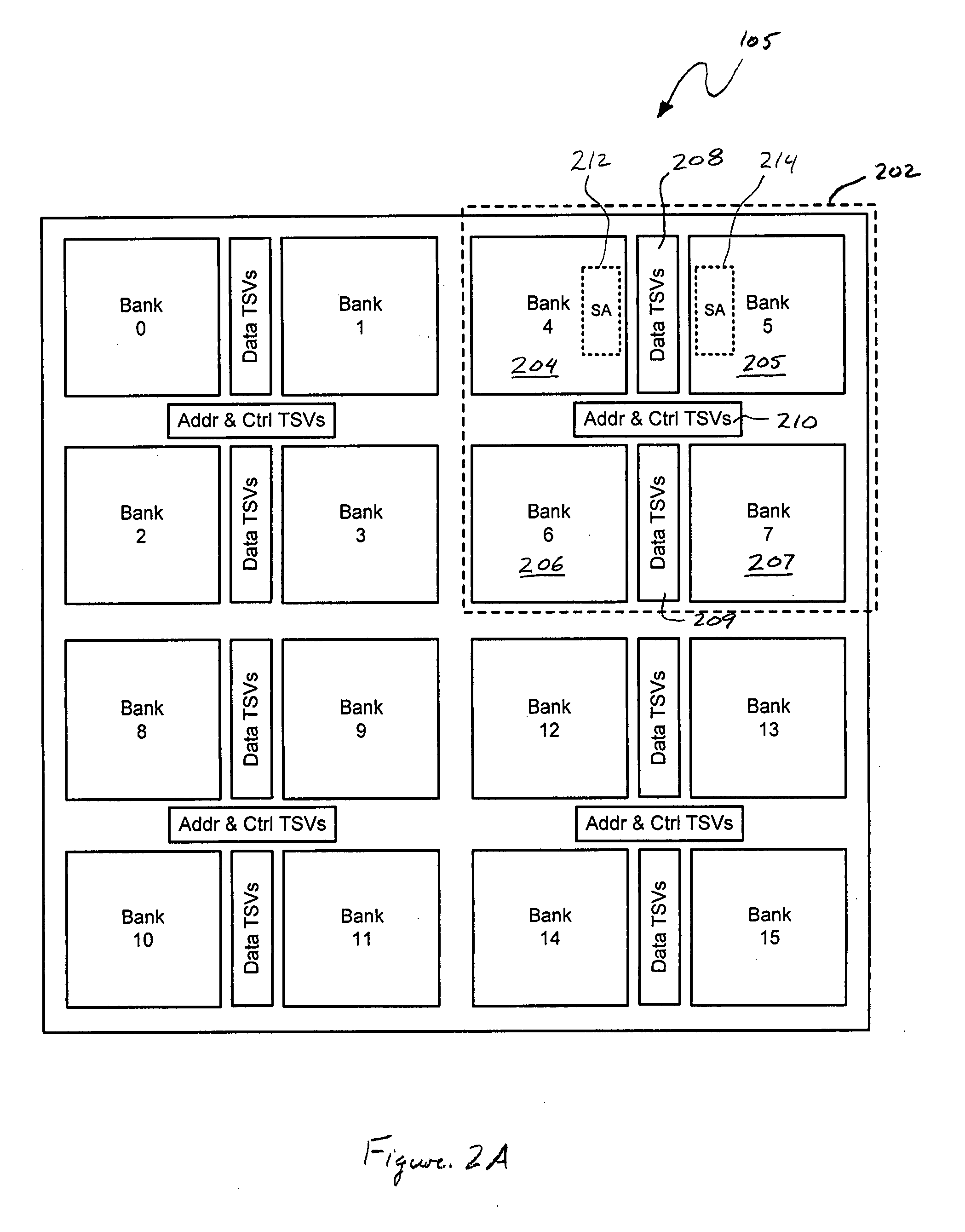Three-dimensional memory module architectures
a memory module and three-dimensional technology, applied in the field of stacking three-dimensional memory modules, can solve the problems of increasing the cost of memory modules, and increasing the performance of main memory systems without a commensurate increase in energy consumption or cos
- Summary
- Abstract
- Description
- Claims
- Application Information
AI Technical Summary
Benefits of technology
Problems solved by technology
Method used
Image
Examples
Embodiment Construction
[0024]Embodiments of the present invention are directed to stacked, three-dimensional memory modules including multiple internal data buses for reducing internal interconnect delays. The multiple internal data buses are implemented using through silicon vias allowing the memory modules to be organized as many small, high bandwidth sub-blocks leading to reduced access time and reduced power consumption.
[0025]FIG. 1 shows a cross-sectional view of a three-dimensional, electronic memory module (“memory module”) 100 in accordance with embodiments of the present invention. In the illustrated example, the memory module 100 includes a memory-controller layer 102 disposed on the top surface of a package body 104 and a stack of eight individual memory layers 105-112 disposed on the top surface of the memory-controller layer 102. The memory layers 105-112 can be volatile memory layers, such as DRAM, non-volatile memory layers, or a combination of volatile and non-volatile memory layers. The m...
PUM
 Login to View More
Login to View More Abstract
Description
Claims
Application Information
 Login to View More
Login to View More - R&D
- Intellectual Property
- Life Sciences
- Materials
- Tech Scout
- Unparalleled Data Quality
- Higher Quality Content
- 60% Fewer Hallucinations
Browse by: Latest US Patents, China's latest patents, Technical Efficacy Thesaurus, Application Domain, Technology Topic, Popular Technical Reports.
© 2025 PatSnap. All rights reserved.Legal|Privacy policy|Modern Slavery Act Transparency Statement|Sitemap|About US| Contact US: help@patsnap.com



